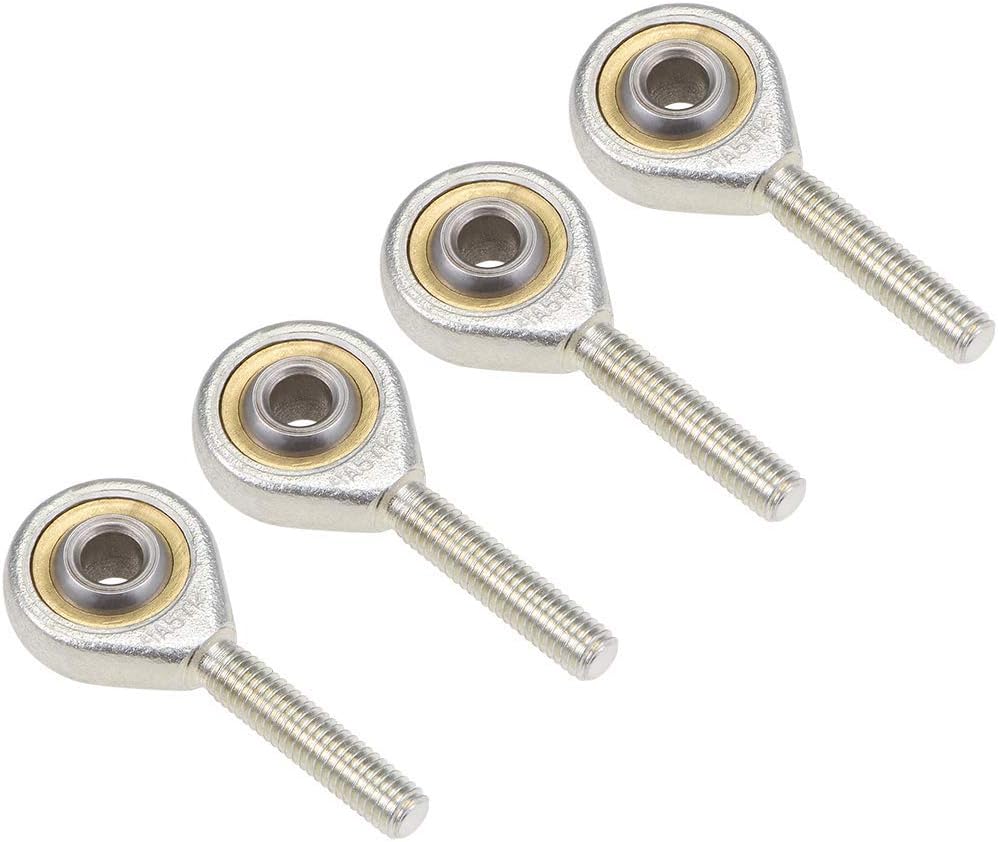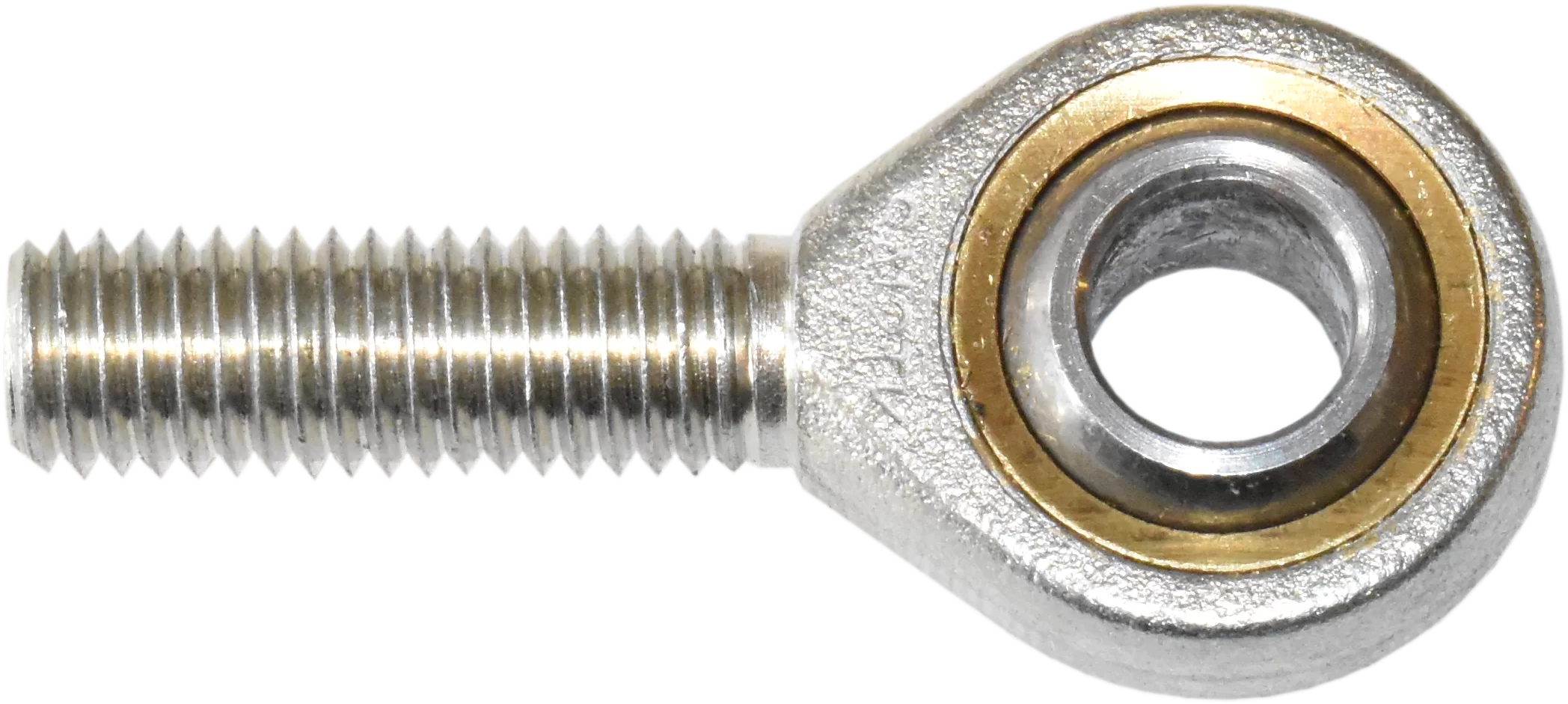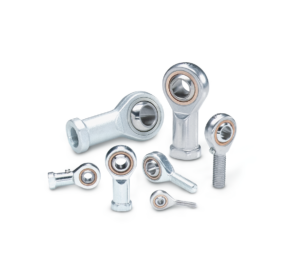
Role of Seals and Boots in Protecting Rod End Bearings
Seals and boots serve a crucial role in safeguarding rod end bearings from contaminants and moisture in various applications. Here’s an overview of their functions:
Contaminant Protection:
Rod end bearings are often exposed to harsh environments, including dust, dirt, debris, and other contaminants. Seals and boots create a protective barrier around the bearing’s moving parts, preventing these contaminants from entering the bearing’s internal components.
By effectively sealing off the bearing, they help maintain the integrity of the lubricant and prevent abrasive particles from causing premature wear or damage to the bearing surfaces. This is especially important in applications where cleanliness and reliability are critical, such as aerospace, automotive, industrial machinery, and more.
Moisture Resistance:
In applications where exposure to moisture is a concern, seals and boots act as a defense against water, humidity, and other liquid contaminants. This is vital for preventing corrosion and maintaining the performance of the rod end bearing over time.
Seals and boots are often made from materials that are resistant to moisture, enhancing their protective capabilities. They create a barrier that keeps water away from sensitive bearing components, such as rolling elements and raceways.
Increased Lifespan:
By preventing contaminants and moisture from infiltrating the bearing, seals and boots extend the lifespan of the rod end bearing. They contribute to the overall durability and reliability of the bearing in various applications, ultimately reducing maintenance requirements and replacement intervals.
It’s important to select the right type of seal or boot for a specific application, taking into account factors such as the level of contamination, exposure to moisture, operating conditions, and temperature range. Proper maintenance and periodic inspection of seals and boots are also essential to ensure continued protection and optimal bearing performance.

Challenges and Solutions in Managing Load and Misalignment in Rod End Bearings
Rod end bearings often face challenges related to load capacity and misalignment in various applications. Here are the common challenges and solutions:
1. Radial and Axial Loads:
Challenge: Rod end bearings need to handle both radial and axial loads simultaneously in many applications.
Solution: Select rod end bearings with appropriate load ratings and materials to ensure they can withstand the expected loads. Also, proper maintenance and lubrication are essential for maximizing load-carrying capacity.
2. Misalignment:
Challenge: Misalignment can cause premature wear and reduced bearing lifespan.
Solution: Use self-aligning rod end bearings or incorporate spherical plain bearings to compensate for misalignment. Regular inspection and maintenance to correct any alignment issues are crucial.
3. Corrosion and Contaminants:
Challenge: Exposure to moisture, chemicals, and contaminants can lead to corrosion and damage.
Solution: Choose rod end bearings with suitable protective coatings or seals, such as PTFE liners or rubber boots, to prevent contaminants from entering. Stainless steel bearings offer enhanced corrosion resistance.
4. Lubrication:
Challenge: Inadequate lubrication can result in increased friction, overheating, and premature failure.
Solution: Follow the manufacturer’s lubrication recommendations and maintenance schedules. Proper lubrication ensures smooth operation and extends bearing life.
5. Shock and Impact Loads:
Challenge: Applications with frequent shock and impact loads can subject rod end bearings to excessive stress.
Solution: Choose rod end bearings with robust construction and materials to withstand shock loads. Regular inspections are necessary to detect early signs of damage.
By addressing these challenges with appropriate solutions, rod end bearings can perform optimally and provide long-lasting service in a wide range of applications.

Scenarios Requiring Articulation and Pivoting with Rod End Bearings
Rod end bearings are essential components in scenarios where articulation and pivoting are crucial. Here are some examples:
- Vehicle Suspension: Rod end bearings in a vehicle’s suspension system allow articulation of the wheels, ensuring a smooth and controlled ride, especially on uneven terrain.
- Aircraft Control Surfaces: In aviation, rod end bearings enable the pivoting of control surfaces like ailerons, elevators, and rudders, providing precise control over an aircraft’s movements.
- Robotic Arms: Rod end bearings facilitate the articulation and pivoting of robotic arms in manufacturing, assembly, and medical robotics, allowing for precise and flexible movement.
- Construction Equipment: Heavy machinery such as excavators and cranes rely on rod end bearings for articulation in booms, buckets, and other moving parts for effective operation.
- Marine Steering Systems: Rod end bearings play a vital role in boat steering systems, allowing articulation of the outboard motor or inboard-outboard drive unit.
- Agricultural Machinery: Tractors and combines use rod end bearings to articulate and pivot components in the steering and hydraulic systems for farming operations.
- Rail and Transportation: In rail systems, rod end bearings help with the articulation of train doors, ensuring safe and efficient passenger entry and exit.
- Conveyor Systems: In material handling, rod end bearings assist in the pivoting and articulation of conveyor belt rollers and other components for the smooth movement of goods.
- Sports Equipment: Fitness machines like elliptical trainers use rod end bearings to facilitate articulation in pedal arms, allowing users to exercise effectively.
These examples demonstrate the versatility and importance of rod end bearings in various industries where articulation and pivoting are essential for optimal performance and control.


editor by CX 2024-04-17